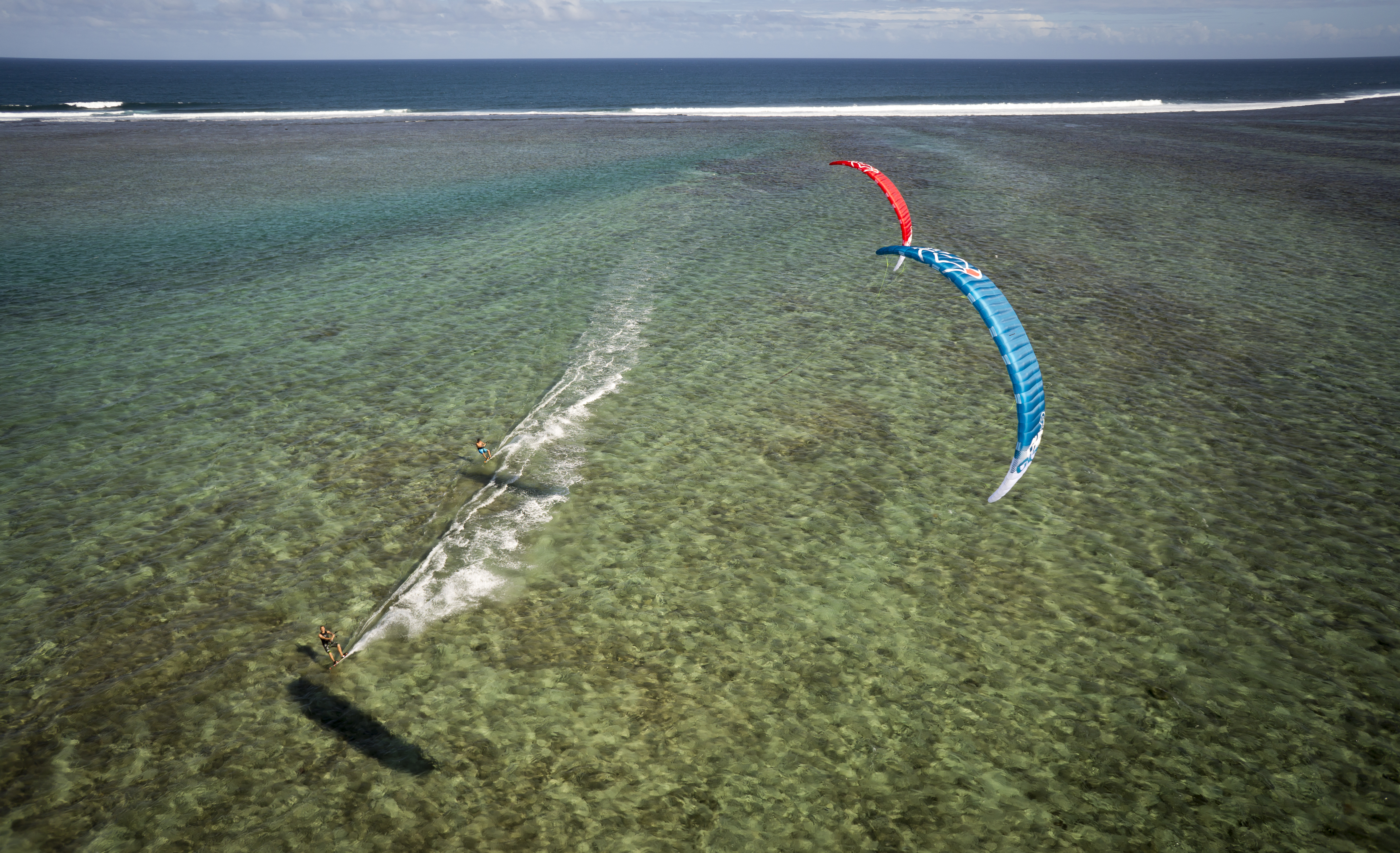Line lengths have a very direct effect on your kites flying characteristics. Which length you ultimately decide on is down to personal preference, but we can outline some situations where different line lengths might provide improved flying characteristics for specific purposes.
First up – we need to start with our standard line lengths – for Ozone this is 25m. All Ozone kites ship with 25m lines except for a few exceptions. The Zephyr ships with 27m and the C4 with 23m. We feel this provides the best overall experience for most riders and provides a good balance between response time, and the amount of power they generate.
Longer lines in light winds
Longer lines create a larger wind window – this means the kite can fly further before it hits the edge of the wind window, therefore generating more power. This is helpful in lighter winds when it is harder to generate power. This is why our lightwind tube kite the Zephyr features 27m lines. The downside to longer lines is that kite feels less direct and responds more slowly. A larger bar can help to provide more leverage and improved response. Water relaunch also suffers with longer lines. If you live somewhere that has a solid lightwind breeze a lot of the time, then a bar with 30m lines might be fun.
Shorter lines for improved turning speed
The C4 comes with 23m lines. This provides a more direct and responsive feel, and faster turning speed. The result is that the kite loops better and can be flown on a smaller bar which helps with handle passes. If you were flying a kite like the Enduro and wanted to optmise it for looping, you could try the shorter 23m lines.
Waveriding – Shorter or longer?
Ultimately we believe 25m provides the best compromise. The REO is our wave kite and it is very fast in the sky – however, if you feel your kite is not turning as fast as you would like – then you could try shorter lines like 23m. This would speed up the turning and make the kite quicker across the window. You would lose some power though. This is most helpful in onshore and cross onshore waveriding conditions where you need to move the kite a lot!
There is also a theory that longer lines give the kite more distance to fall and travel when the lines are slack. It also lifts the kite higher away from turbulence caused by the waves and obstacles on land. This theory makes more sense in cross shore or cross off conditions.
Hydrofoils and racing
Line lengths have been a hot topic in racing over the years. In the years of formula boards lines got long to help generate more power in light winds. As the hydrofoils get up and planing so easily with fairly little power then lines have become shorter and shorter. Many top racers are now using 13m – 17m lines – which is considerably shorter than the standard 25m. The reason being that with shorter lines the kite can sit further forward in the wind window allowing the rider to point into the wind more. This means they are travelling upwind better.
Shorter lines make kites have less power, meaning a larger kite can be held down which in turn helps when wanting to race downwind – there is more sail in the sky.
13-17m is fairly radical and really only for advanced riders. The shorter length reduces drag and racers also typically use our Race lines which feature narrower diameters.
If you are riding a hydrofoil and would like your kite to move a bit faster across the window, which helps with mastering manoeuvres and makes the kite more responsive, we would recommend experimenting with 20m lines to start with.
Check out our Ozone Flying Line Sets. If you have any questions about lines then contact us!





Recent Comments